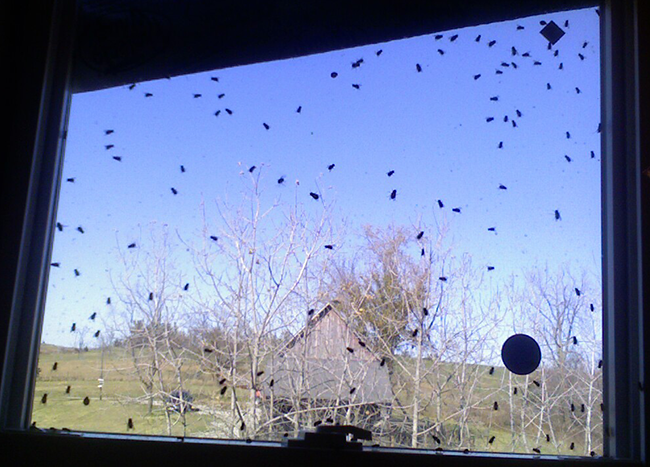Problem With Cluster Flies?

Cluster flies look much like large house flies although they fly much more slowly. Cluster flies, which are also known as attic flies, can be a nuisance if they choose your home for their winter hibernation. There are eight species of Cluster fly in the UK but they are frequently found together in swarms of more than one species.
Measuring between 3 to 4 mm in length, the cluster fly is a parasite of the earth worm.
A cluster fly will lay approximately 130 eggs in one go and will produce an average of two generations during her lifetime. They lay their eggs under rotting leaves or in damp soil near earthworm homes. Cluster fly larvae burrow into the earthworms and mature in their decomposing bodies. If the weather is warm it will only take the larvae seven days to mature. Cluster flies begin to appear in homes as the temperature begins to fall.
At this time of year, the west and south sides of buildings get exposed to more sun and hence are warmer. The warmth from the west and south exterior walls attract the insects and they eventually enter through any available space or crevice! Openings in the wall such as cracks near windows and door frames, opened and unscreened windows and vents provide easy access for these noisy pests. Another issue is that the flies tend to return to the same property year after year. They are not however a reflection of poor hygiene.
Signs Of A Cluster Fly Infestation
It is fairly obvious when there is an infestation. A swarm of flies will hover around the ceiling of their chosen space, especially if there is lighting giving off warmth. The cluster fly gives off a sickly smell of pheromones which attracts other flies to the hibernation spot.
Cluster flies do not pose a health risk to humans. However, if they hibernate in a house or other occupied building, they are a serious nuisance to the inhabitants during the winter when they are in hibernation and also in autumn and spring when they arrive and leave in a massive swarm. If ignored the ‘clusters’ can be enormous with several thousand of flies gathering under the same roof emitting a foul odour. Furthermore, the excrement of hibernating cluster flies may stain the curtains and walls of indoor overwintering sites.
Making sure that gaps around window frames are repointed, and sealing obvious entry
points can help reduce their chances of gaining entry.
However if you are still experiencing cluster fly problems then call one of our pest control professionals to help you today on: 0800 158 3885

